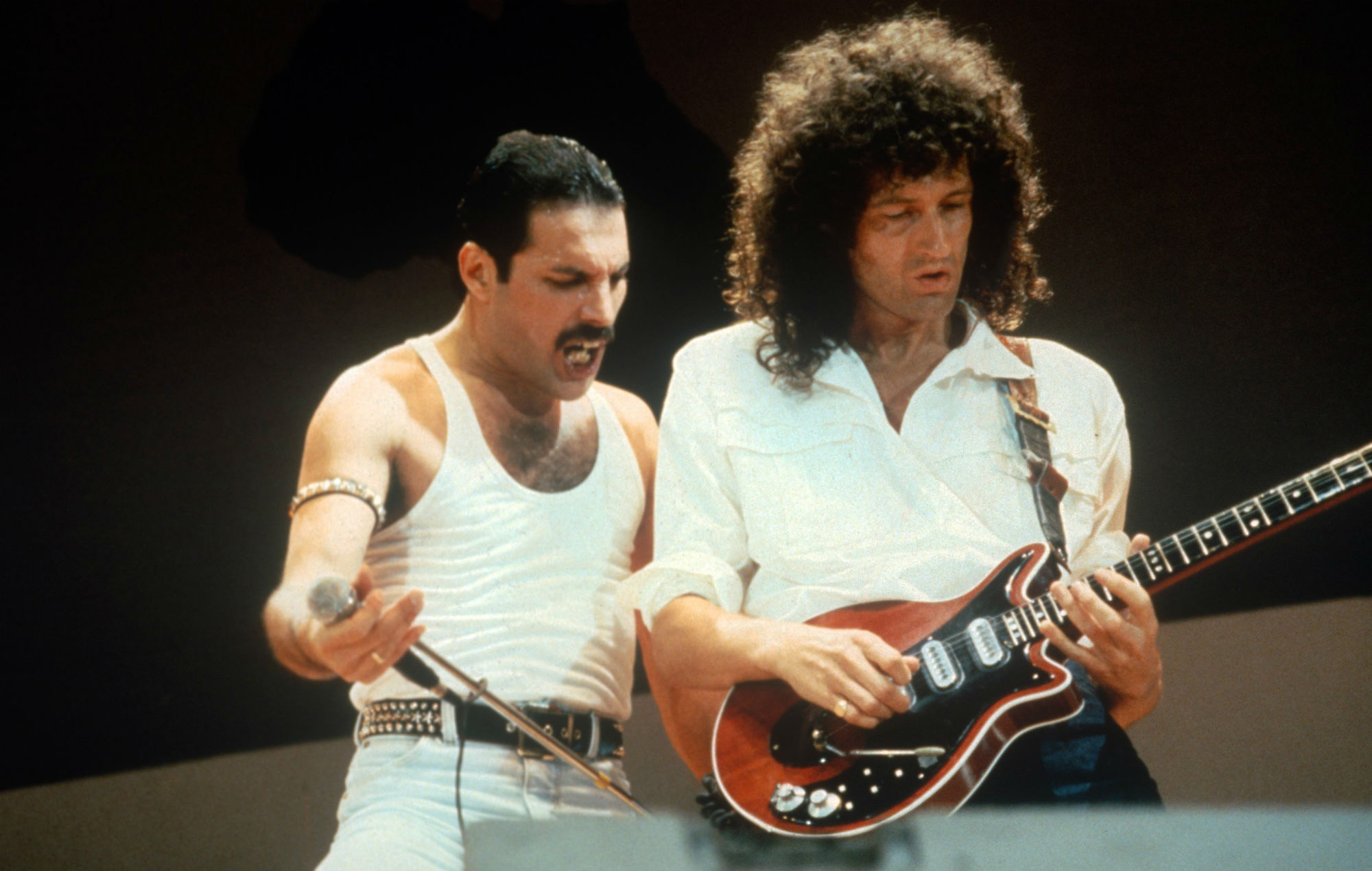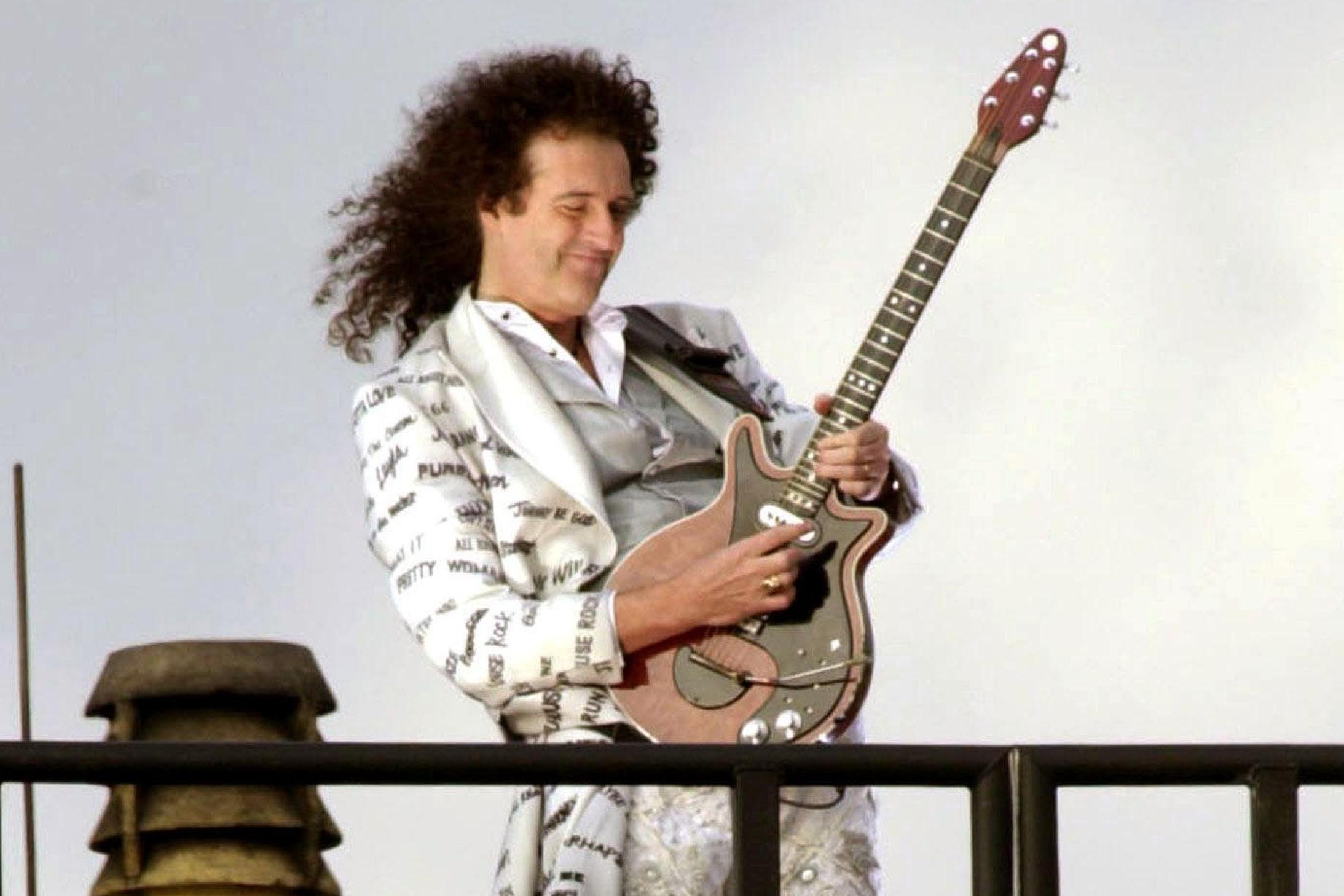Brian May: The True Superhero of Rockstar Scientists
There are many “rockstar scientists” but most are scientists embellishing a solid academic background with tenuous rockstar allusions who are keen to be photographed with a guitar but rarely seen in front of a paying audience. Brian May approaches the trope from the other direction; he’s one of the most successful rockstars in history but also an accomplished astrophysicist whose groundbreaking research absolutely qualifies him to perform onstage in front of lecterns as well as amplifiers. He’s also an inspirational figure to his many fans, providing an object lesson in both coping with depression and persisting with education while displaying a degree of humility and compassion that is truly Superheroic.
Homemade instruments
Brian was born in 1947 to a poor family in Feltham, a small satellite town on the western outskirts of London. While an obviously bright child, Brian was shy and insecure, later saying of himself, “I used to think, ‘My God, I don’t know what to do. I don’t know what to wear. I don’t know who I am’”. One thing he did have from an early age was a broad range of interests, many of which he inherited from his father, a music enthusiast and professional engineer who bought Brian his first acoustic guitar at the age of seven. He also encouraged his son’s interest in astronomy and together they would build Brian’s first telescope from recycled parts.
"The brand new social experience where you activate your gaming skills as you train like a spy."
- TimeOut
Take on thrilling, high-energy espionage challenges across different game zones.

As Brian grew older, he became more proficient with the guitar but when electric guitars were popularized in the early 1960s the Mays were unable to afford one of their own. Ever resourceful, Brian and his father resolved to build their own electric guitar and the end product has become arguably the most famous musical instrument on Earth. Known simply as the Red Special, it was cobbled together from unlikely sources; the body is fashioned from an oak table, while the neck was carved out of the mantle of a Victorian fireplace and the fretboard markers were fashioned from mother-of-pearl buttons taken from Brian’s mother’s sewing box. Brian was able to configure the guitar precisely to his specifications, generating far more feedback than you would find in a commercial instrument, and the end result sounded unlike any other guitar, lending a distinctive and instantly recognizable tone to his songs.

Meanwhile, Brian’s other obsession was also paying dividends. His studies had taken him from school to the prestigious Imperial College London, where in 1968 he completed his BSc in mathematics and physics. He was then invited to begin his postgraduate studies at the Jodrell Bank Observatory by Sir Bernard Lovell, the foremost astronomer of the period. Brian refused, as Jodrell Bank was in a remote rural location, far away from London’s music scene. He chose instead to continue studying at Imperial, where he was beginning to meet other promising musicians; he was in an up-and-coming band called Smile, with an exciting young drummer called Roger Taylor, and would soon be introduced to another Feltham resident called Freddie Bulsara, who would shortly change his name to Freddie Mercury.
Choosing between stars and stardom
In 1970 Smile disbanded, with Brian and Roger forming a new band - Queen - with Freddie as the frontman. Success did not come quickly, and for the first couple of years of the band’s existence Brian continued to split his time between rock and astronomy. Queen was based in London, but increasingly Brian was to be found in Tenerife, studying for his doctoral thesis at the island’s observatory. Meanwhile, Queen was signed by a record label and began releasing albums, with a moderately successful eponymous debut early in 1973 and the follow-up album Queen II bringing the band their first hit, Seven Seas of Rhye, later that same year. It was becoming clear that Brian’s PhD would need to take a back seat, and in 1974 he reluctantly abandoned his studies and focused on rock stardom instead.

Queen would go on to become one of the biggest-selling musical acts of the 20th century, selling 170m records worldwide and dominating the charts until Freddie Mercury’s untimely death from AIDS in 1991. Brian was severely affected by the protracted illness and death of his old friend and writing partner, and this was compounded by his father’s death from cancer the same year. Brian had been struggling with his mental health for some time but these tragic events sent him into a serious depression and he later described how he was driven to contemplate suicide. Fortunately, he was able to find solace by throwing himself into his work, including the emotionally exhausting task of releasing the extensive back catalog of Freddie’s recordings from the last years of his life. During this period Brian endured several unsuccessful attempts at therapy before eventually finding effective treatment when checking into the Cottonwood Tucson clinic in Arizona in 2000.
Drawing strength from the milieu
At Cottonwood, Brian encountered many other people with similar experiences and he found this extremely helpful. As he later put it, “The most powerful part… was what they call the milieu, which is the fact that you’re in a facility with people who, like yourself, have kind of thrown in the towel... So you have this great bond with all these other people who’ve done the same thing and you see them, you see their process, and you talk to them and you try to help them and this business of trying to help other people is incredibly powerful.”
May has talked in interviews about how difficult it has been for him to deal with Freddie’s death in the spotlight of the media, but he was also keenly aware of his role as the remaining figurehead of one of the most popular bands on Earth and the power this gave him to help his fans by sharing his own experiences, building a virtual milieu similar to the one he found so helpful at Cottonwood. This has only become easier over time with the advent of social media platforms, which have enabled Brian to form direct connections and provide a great deal of support to his fans, but even before the rise of Twitter and Instagram he was enthusiastic about using the Internet to reach out on his website. He also hasn’t shied away from talking about his mental health problems in the media and, although he’s clearly a private person who prefers to avoid the limelight where possible, he has pushed himself to talk publicly about his experiences in order to provide helpful context for others with similar problems; a Truly Superheroic gesture that has meant a great deal to his many fans.

He’s also been an inspirational figure to many who seek to resume education later in life. Brian finally returned to astrophysics after a 34-year hiatus, looking to complete his studies. Incredibly, when Brian began his research in the early 1970s, the subject matter - radial velocities in the zodiacal dust cloud - was very much at the vanguard of modern astrophysics, but it became less fashionable as time passed. When he made the decision to return to his studies there had been very little progress made in the field, meaning he was still eligible for a PhD, awarded in 2007. With that achieved, Dr. May can now combine his obsessions, releasing music inspired by space telescopes while touring the world as the only True Superhero of both rock and science.
SPYSCAPE+

Join now to get True Spies episodes early and ad-free every week, plus subscriber-only Debriefs and Q&As to bring you closer to your favorite spies and stories from the show. You’ll also get our exclusive series The Razumov Files and The Great James Bond Car Robbery!


Gadgets & Gifts
Explore a world of secrets together. Navigate through interactive exhibits and missions to discover your spy roles.
Your Spy Skills
We all have valuable spy skills - your mission is to discover yours. See if you have what it takes to be a secret agent, with our authentic spy skills evaluation* developed by a former Head of Training at British Intelligence. It's FREE so share & compare with friends now!
* Find more information about the scientific methods behind the evaluation here.


Stay Connected
Follow us for the latest
TIKTOK
INSTAGRAM
X
FACEBOOK
YOUTUBE